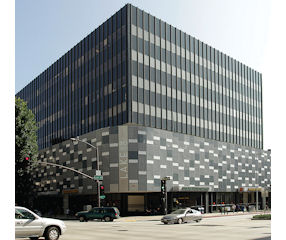The U.S. Small Business Administration is trying to loosen the purse strings on its loan programs. The federal agency wants to both streamline the application process and remove restrictions that keep some small business owners from receiving SBA-backed loans. Among the key changes is no longer requiring potential borrowers to list their personal assets when applying for a loan and eliminating the requirement that real estate and equipment loans can only apply to expenses dating back nine months. Lending industry professionals are pleased with the steps the federal agency is taking and see it as a sign of an improving economy. “We are going to revisit (borrowers) that were not eligible under the old criteria in many of our markets,” said Steve Doss, regional sales manager in Southern California for SBA lending at Wells Fargo Bank. “It has made it difficult for some to get loans.” Los Angeles region SBA officials declined to discuss the changes during a 60-day public comment period that ends in late April. Those comments are being considered by the White House Office of Management and Budget, which is expected to give approval to the changes later this year. The SBA guarantees loans to small businesses made by banks and other institutions as a way to minimize the lenders’ risk and increase the flow of funds. The two most popular types of loans are 7(a) loans, used to finance equipment, supplies, new construction, acquiring other businesses and short-term working capital; and 504 loans, used to acquire fixed assets for expansion or modernization. The elimination of the Personal Resource Test, which looks at the personal assets of the borrower, will likely affect the most people. A borrower whose personal wealth was too high under SBA guidelines would not be eligible to receive a 504 or 7(a) loan. But having that requirement was like penalizing the owner for doing the right thing of being liquid and responsible, said Antonio Pizano, director of business development at Valley Economic Development Center, a Sherman Oaks nonprofit lender. “By eliminating that (test) it opens doors for more small business owners,” Pizano said. Borrowers, however, still must pass the “credit elsewhere” test, which also uses personal assets to calculate if a borrower is likely to get a traditional loan not backed by the SBA, said Bob Coleman, editor of the Coleman Report, a La Canada-based SBA lending industry newsletter. Immigrant businesses The SBA also wants to revise its rules governing loan access by small businesses with outside investors. Under current rules, some small businesses would not qualify under SBA size standards when associated with outside investors. This revision will be most helpful to immigrant families whose older, more established members provide money to younger members to start a new business, Coleman said. The current rules require the older family member to provide documentation of that assistance if the relative applied for an SBA loan. The revision would eliminate that paperwork, thus not penalizing small businesses that receive family assistance. “We want to have an uncle involved who can help out a small business owner,” Coleman said. The Los Angeles district office of the SBA is among the largest in the U.S. in dollar volume and number of loans when it comes to lending. In 2012, the office backed loans totaling $402 million in the San Fernando, Santa Clarita, Antelope and Conejo valleys, and eastern Ventura County including Camarillo and Simi Valley. The district office covers Los Angeles, Ventura and Santa Barbara counties. Top lenders in the region include JPMorgan Chase Bank of New York, Wells Fargo Bank of San Francisco, and CDC Small Business Finance Corp. of Pasadena. CDC Small Business Finance ranked No. 1 on the San Fernando Valley Business Journal’s SBA Lenders list. While Wells Fargo did not make the list of top local lenders, the bank has been doing more SBA lending as the economy shows encouraging signs of strengthening, low interest rates make it a good time to borrow and the bank can be competitive against other lenders, Doss said. “In general, businesses are doing better than the past few years and seeing stronger balance sheets,” he said. One such business is AcuFast Aircraft Products, a fastener manufacturer in Sylmar that will move this year into a 50,000-square-foot building partially purchased with a Wells Fargo SBA loan. Company founder and President Art Dovlatian took a second mortgage on his home to start AcuFast in 2006. Within six months he was out of money and went to Wells Fargo for his first SBA loan. The bank later provided a 504 loan to finance his expansion. “I had better offers on the table but stayed with Wells to show loyalty to the bank that helped me in the first place,” Dovlatian said.
